Measuring the Global Influence of a City
While major global cities may share many broad similarities such as population size, economic structure, and public transportation options, it can still be difficult to compare their ‘influence’ or ‘power’ due to variations seen at the micro-level. A company setting up operations in Paris will likely have a very different experience from one opening an office in Dubai, whether it concerns dealing with regulations or finding human resources. Despite these differences, indices and benchmarks can be a useful tool in not only comparing between cities, but also allowing cities to analyze their own results and set policies for the future. Indices like the Mori Memorial Foundation’s Global Power City Index, which offers a comprehensive look at 44 global cities across several categories, aim to achieve this goal.
How then do we measure a city’s influence? Cities project their influence, or ‘power’ as the GPCI terms it, by connecting to the world and establishing themselves as an attractive place to work, inhabit, and visit. The GPCI evaluates this power by using data representing 70 carefully selected indicators across 6 functions, which are then indexed into indicator groups to create a function-specific ranking. The last step consists in combining the scores for each function to generate a comprehensive score, providing a broad look at what makes cities globally ‘powerful’. This comprehensive approach that covers everything from Economy to Accessibility is necessary since workers, residents, and tourists will also have ‘needs’ that go beyond a single category.
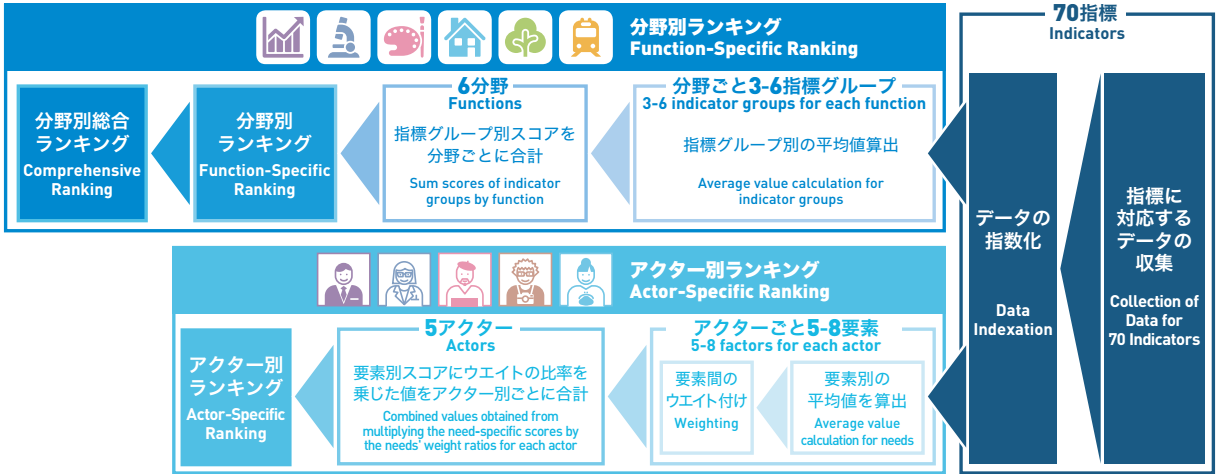
Source: GPCI 2017, Mori Memorial Foundation
For businesses considering a new city to enter, the Economy indicators of ‘Corporate Tax Rate’, which measures the taxes that companies are required to pay, and ‘Ease of Securing Human Resources’, which gauges how easy it is to find and hire talented workers, would likely be important. Prospective workers might seek out cities with high scores for ‘Wage Level’ in the Economy function as well as ‘Variety of Retail Shops’ and ‘Variety of Restaurants’ in Livability, to ensure a well-paid and exciting lifestyle. Accessibility indicators like ‘Commuting Convenience’ and ‘Punctuality and Coverage of Public Transportation’ would also factor in to a new employee’s considerations of which city would be best in terms of mobility.
 |
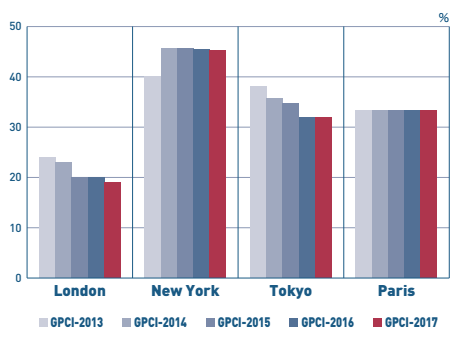 |
|
Ease of Securing Human Resources (Source: GPCI 2017, Mori Memorial Foundation)
|
Corporate Tax Rate (Source: GPCI 2017, Mori Memorial Foundation)
|
The results given by the GPCI are not only useful for the actors mentioned above, but also for city officials aiming to discover areas of strength as well as weakness, and thus better implement effective policy. A city wishing to boost its tourist numbers might first be alerted to a decline in visitors through the indicator ‘Number of Visitors from Abroad’ in Cultural Interaction. Further investigation of the indicators evaluating the number of tourist-related sites such as Theaters and Concert Halls, Museums, Stadiums, and Hotels could show a lack of tourist facilities, and more could be done to improve in these specific areas. The ‘Number of Cities with Direct International Flights’ which measures how many destinations can be reached from a city without stopovers could also indicate whether there is a lack of connectivity to certain regions, while the ‘Travel-Time between Inner City Areas and International Airports’ indicates how quickly visitors can reach the inner city (where most hotels and tourist sites are likely located). Indices like the GPCI allow local governments and those involved in urban policy to view their cities from several different angles and in a broad global context—becoming a tool for assessing current strategies, as well as developing new objectives.

Finally, cities are a function of the people who inhabit them, and as such cities must be attractive places in which to reside in order to keep growing and sustaining their economies. Livability is of course a key component, with such indicators as ‘Average House Rent’ and ‘Price Level’ determining how expensive a city is in terms of living costs. Safety and health are often also top priorities and can indicate how well a city takes care of its residents. ‘Number of Murders per Million People’ and ‘Number of Medical Doctors per Million People’ are two points when considering resident well-being, while environmental factors such as ‘CO2 Emissions’ and ‘Level of Green Coverage’ can also adversely (or positively) affect a city’s quality of life in terms of health.
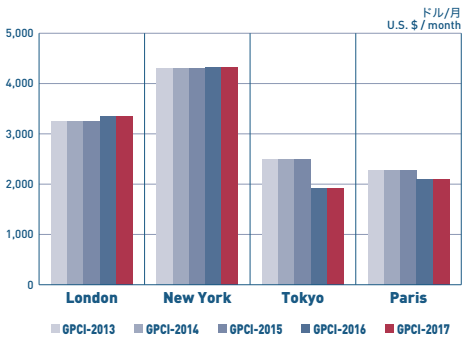 |
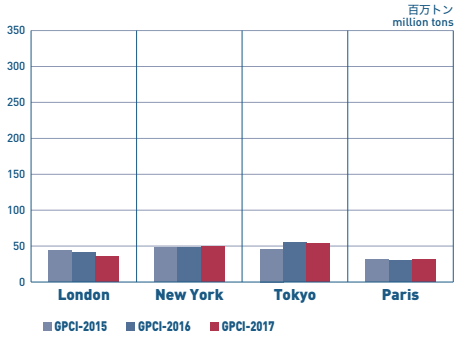 |
|
Average Housing Rent (Source: GPCI 2017, Mori Memorial Foundation)
|
CO2 Emissions (Source: GPCI 2017, Mori Memorial Foundation)
|
What can we learn from indices and their results? While no urban index is perfect, a well-balanced comprehensive assessment of cities can help urban planners and officials involved in city development benchmark their performance over several years and examine the effectiveness of their policies. The GPCI, for example, is being used by the Tokyo Metropolitan Government as a Key Performance Indicator (KPI) in their city planning strategy. With 10 years of available data for comparative analysis, the GPCI is able to function as a robust tool for cities to identify trends in their own scores, as well as the results of other major competitors. In summary, indices like the GPCI allow cities to look both inward at the state of their own functions, and outward at their relative position in the world.
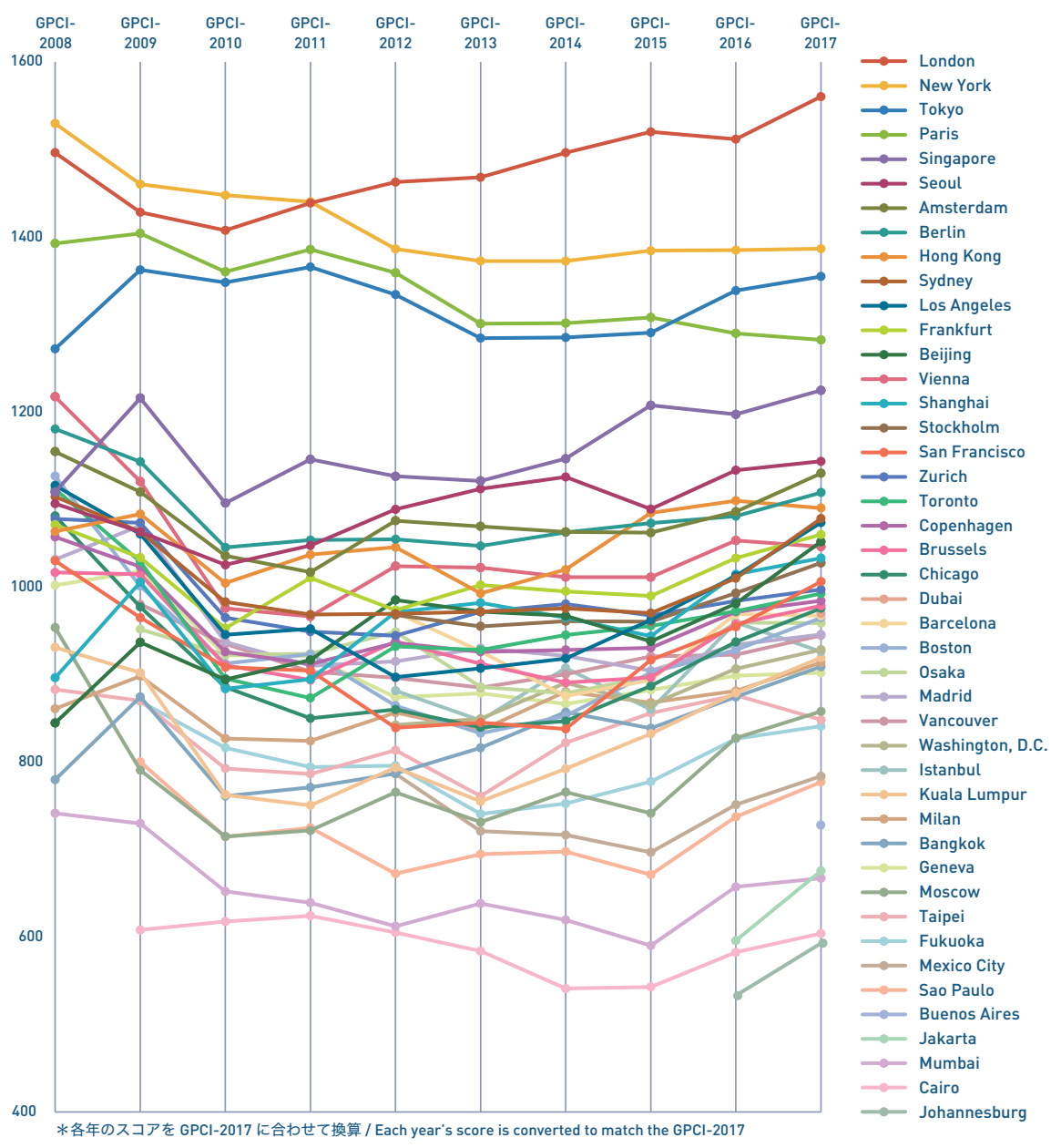
Cet article a également fait l'objet d'une publication sur Géoconfluences.
Pour citer cette ressource :
Hiroo Ichikawa, Measuring the Global Influence of a City, La Clé des Langues [en ligne], Lyon, ENS de LYON/DGESCO (ISSN 2107-7029), mai 2018. Consulté le 24/09/2025. URL: https://cle.ens-lyon.fr/anglais/civilisation/les-dossiers-transversaux/developpement-durable/measuring-the-global-influence-of-a-city



 Activer le mode zen
Activer le mode zen